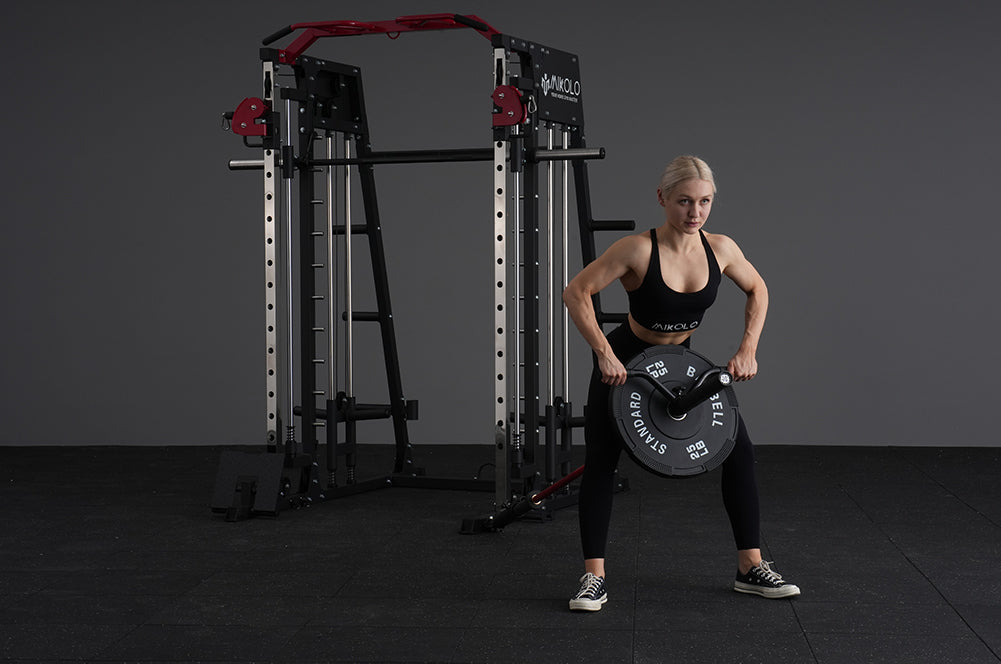If you’re aiming to build a stronger, more defined back, the low row machine is one of the most effective tools in the gym. Whether you're a beginner or revisiting your back day fundamentals, understanding how to properly use this equipment is key to maximizing gains and avoiding injury.
What Is a Low Row Machine?
A low row machine—often referred to as a seated row or back row machine—is designed to target the muscles of the upper and mid-back using a horizontal pulling motion. It typically features a bench or seat, a chest pad for support, a low cable attachment, and foot platforms to anchor your body as you row.
How to Use the Low Row Machine (Step-by-Step)
-
Set Up the Machine:
-
Adjust the seat height so your chest rests comfortably against the pad.
-
Place your feet on the foot platforms with knees slightly bent.
-
Choose an appropriate weight that allows you to perform the movement with control.
-
-
Grip the Handle:
-
Use a neutral grip (palms facing each other) or overhand grip depending on the handle type.
-
Keep your arms fully extended without locking your elbows.
-
-
Initiate the Row:
-
Pull the handle toward your lower ribcage by driving your elbows straight back.
-
Squeeze your shoulder blades together at the peak of the movement.
-
Avoid leaning back or using momentum—your torso should remain stable.
-
-
Control the Eccentric Phase:
-
Slowly extend your arms to return to the starting position.
-
Keep your core braced and shoulders away from your ears throughout.
-
Muscles Worked During the Low Row Exercise
The low row machine primarily activates:
-
Latissimus dorsi (lats): the broad muscles that run down the sides of your back
-
Rhomboids: located between your shoulder blades
-
Trapezius (mid and lower fibers): for scapular stability
-
Posterior deltoids: rear shoulders
-
Biceps and forearms: secondary muscles involved in pulling
Engaging the correct muscles requires strict form and a controlled tempo. Rushing the movement or pulling with your arms instead of your back often reduces effectiveness.
Personal Note on Low Rows
I remember when I first incorporated the low row machine into my back routine. At the time, I was struggling with developing my mid-back and often felt more bicep fatigue than back engagement. A trainer advised me to visualize “pulling with my elbows” rather than my hands. That single cue changed everything. By focusing on elbow drive and scapular retraction, I finally felt the deep squeeze between my shoulder blades that signaled proper back activation. Since then, the low row has become a staple in every one of my back workouts.
Common Mistakes to Avoid
-
Using momentum: Rocking the torso reduces back activation and increases injury risk.
-
Letting shoulders round forward: This limits range of motion and places stress on the neck.
-
Too much weight: If you can’t control the motion, drop the load and rebuild with strict form.
Final Tips for Better Results
-
Perform 3–4 sets of 8–12 reps, focusing on time under tension.
-
Combine the low row with lat pulldowns, pull-ups, or T-bar rows for a balanced back routine.
-
Stretch your lats and rhomboids post-workout to maintain mobility and support recovery.
Whether you're working on posture, pulling strength, or overall back development, mastering how to use the low row machine correctly can elevate your training. Commit to form, feel the muscles work, and make every rep count.










































Leave a comment
This site is protected by hCaptcha and the hCaptcha Privacy Policy and Terms of Service apply.